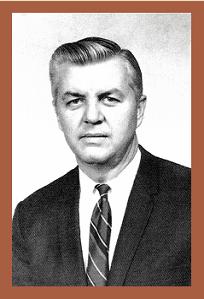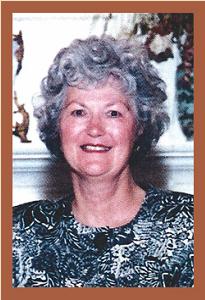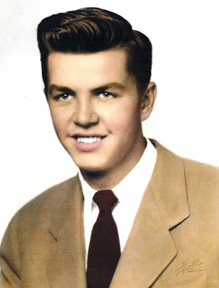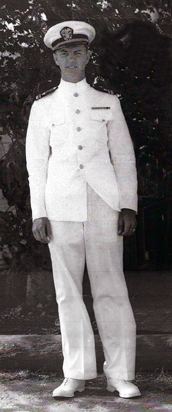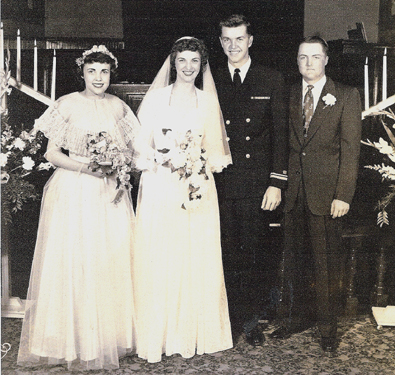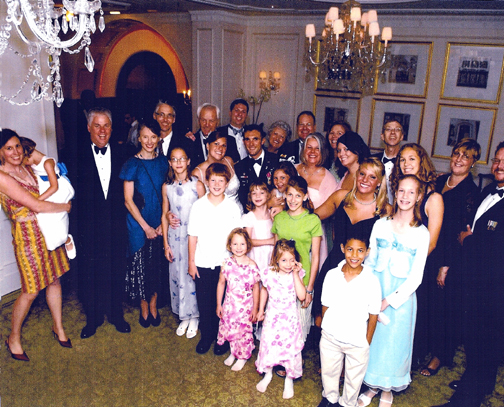Gerald Dean Love
born: August 4, 1927
in Albia, Iowa
(Monroe County)
Mildred Lois (Jan) Casey
born: July 9, 1928
in Iowa City, Iowa
(Johnson County)
died: November 9, 2011
in Lake Mary, Florida
(Seminole County)
Jerry and Jan Love were married April 4, 1952
in La Porte City, Iowa (Black Hawk County) and
are the parents of 5 children, 12 grandchildren
and 1 great-granddaughter.
Mildred (Jan) Casey Love 1928 - 2011
In lieu of pursuing a career in business, she decided early in her married life to be a homemaker, a choice that led to a busy and fulfilling life with five children and active participation in various civic organizations. Because her husband worked as a civil engineer, the family made frequent moves to engineering projects at new locations. During her adult life the family lived in ten different states and spent two years on an overseas assignment in Southeast Asia. Jan graciously accepted the responsibilities associated with relocating the family and always looked forward to the next move, even though it meant leaving friends behind.

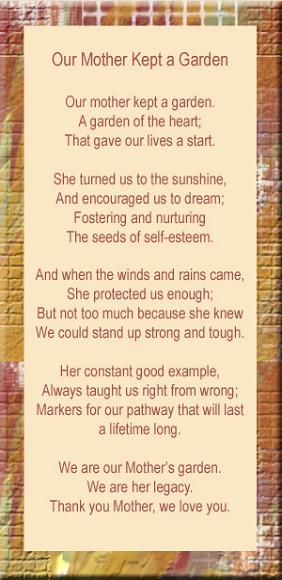
Jan is survived by her loving husband of nearly 60 years, Jerry Love; five children, Laura Parris of Slidell, Louisiana, Cynthia Hazel of Oakton, Virginia, Gregory Love of Arlington, Virginia, Linda Mesler of Andover, Massachusetts, and Geoffrey Love of Evergreen, Colorado; twelve granddaughters, three grandsons, and one great granddaughter. Jan was laid to rest at Arlington Cemetery (Grave 69, Section 718) in Washington, D.C., December 15, 2011.
Her active participation in many civic and philanthropic organizations included membership in the American Association of University Women, the University of Iowa Alumni Association, the Delta Zeta Sorority, the P.E.O., and the Markham Woods Presbyterian Church.
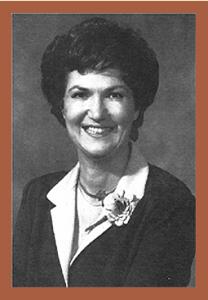
BIOGRAPHY OF GERALD DEAN LOVE
Gerald Dean Love was born August 4, 1927, to Guy and Grace (Gray) Love on the rural farm in Bluff Creek Township five miles northwest of Albia that was originally owned by his Great Grandfather James Hamilton Love, one of the early pioneer merchants in Monroe County. His mother often said he was a very independent child who, at a very early age was quite content to play by himself for hours at a time.
Jerry, as he became known by friends in his youth, attended the same one room country school that his father and siblings also attended and after completing eight grades, entered the Albia Community High School, graduating with the class of 1944 at the age of sixteen. Even as a teenager he further demonstrated his independent streak by, unknown to his parents, taking a summer job working for the Morrell Packing Company in Ottumwa, Iowa between his junior and senior years in high school. Because there was a manpower shortage as a result of the World War II armed forces requirements, most companies willingly hired sixteen year olds but since he was only fifteen he successfully addressed this problem by using his seventeen-year-old brother's birth certificate.
Jerry continues to enjoy an active retirement life in Lake Mary, FL where he enjoys golf, participation in civic organizations, gardening, and traveling. Unfortunately his dear wife, Jan, with whom he shared almost sixty happy years of marriage, died as a result of failing health November 9, 2011.
Jerry decided in his senior year of high school that he wanted to obtain a college education and independently elected to pursue a career in Civil Engineering. He was accepted by Iowa State in Ames, Iowa as an engineering student and entered his freshman year in the fall of 1944, knowing that he would be able to complete his freshman year prior to be being eligible for the draft and military service in World War II. In order to at least partially finance his college expenses he decided to work in a defense industry during the summer months before entering college and again struck out on his own, this time traveling to San Pedro, California with a friend where he was hired by Western Pipe and Steel as a welder assembling Liberty Ships. It was an interesting work experience for a sixteen year old youth and amazing to see first-hand how quickly the ships could be assembled and outfitted for transporting war materials across the Pacific to the combat areas.
After spending the summer in California he returned to Iowa to enter Iowa State as an Engineering Freshman. He soon discovered that his college subjects were much more challenging than high school but he did well academically and after completing his freshman year he realized he had made a good decision to pursue an engineering career.
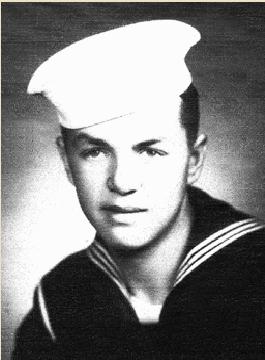
The surrender of Japan as a result of the dropping of two atomic bombs on their homeland in August 1945 permitted the Navy to commence reducing fleet sizes and discharging veterans who had served throughout the war. Therefore, upon completing recruit training, he, with the majority of his boot company, was sent to the Asiatic Pacific area to replace sailors that were being discharged. He was assigned to an LSM amphibious ship that operated in the Philippine Islands transporting troops and equipment to various islands where Japanese soldiers were still holding out. He enjoyed sea duty with the exception of a typhoon but was pleased when his ship sailed from the Philippines to Guam where he caught a troop ship to San Francisco followed by a troop train to Minneapolis where he was released from active duty as a third class petty officer in time to return to Iowa State in the fall of 1946 after only a year of military duty.
Jerry thoroughly enjoyed his remaining three years of college not only because of interesting and challenging civil engineering courses but also the fraternity social life that afforded the opportunity to date and socialize with many coeds and, in particular, one Jan Casey that turned out to be his future wife. Unfortunately, they didn't see each other as often as they would have liked since she attended the University of Iowa that was a good distance from Ames but they did continue to maintain a friendly relationship.
With the war in the Pacific still raging, rather than waiting to be drafted when he became eighteen, Jerry volunteered for military service in the U.S. Navy at the age of seventeen and was sent to the San Diego Naval Recruit Training Center or Boot Camp as it was commonly called. Although the training was very rigorous, it became rather routine after one made the adjustment to the boot camp life style. However, he did have one advantage in that as a result of taking required ROTC in his freshman year of college, he was well qualified in close order military drill. The recruit training petty officer soon recognized this, assigning him to march the boot company to and from all of the training classes and in return excused him from standing watches and any barracks cleaning details. The other perk was that he was free to attend the base movies and any other base activities each evening.
Jerry's 1949 college
graduation photo
In addition to his civil engineering courses, he also enrolled in the Navy ROTC program and as a result, when he graduated in December 1949, he not only received a BS degree in Civil Engineering but also a reserve commission as an Ensign in the Navy Civil Engineer Corps. After graduation, like many college graduates, he didn't have any firm fixation on what type of civil engineering career he wanted to pursue. However, he had enjoyed his NROTC courses, particularly a course in Navigation taught by the Executive Officer, a Commander who had served in submarines during WW II. He did well in this course and as a result, developed a close student-instructor relationship with the Commander. During one of their frequent informal discussions, the Commander suggested that with a civil engineering degree and having taken a year of courses in surveying as well as his navigation course, Jerry should at least talk to the Commanding
Officer of the NROTC unit at Iowa State, a Captain, who had served many years aboard Navy survey ships assigned to the Navy Hydrographic Office.
When they met a few days later, the Captain advised that the Hydrographic Office hired civilian engineers with an interest in surveying to serve aboard hydrographic ships, primarily to do accurate surveys for the development of navigational hydrographic charts. He explained that the Navy had two survey ships, the USS Tanner and the USS Maury each of which had eight to ten civilian hydrographic engineers on board that were usually deployed for periods of approximately six to eight months outside the continental limits of the US before returning to the Brooklyn Navy Yard at which time the civilian engineers would report for duty in the Hydrographic Office located in Suitland, Maryland, a suburban community in the Washington, D.C metropolitan area. After talking approximately an hour or so, the Captain indicated he would be glad to write a letter of recommendation to the Hydrographic Office advising that one of his NROTC students had expressed an interest in possible employment as a Hydrographic Engineer. Jerry thanked the Captain and stated that he was definitely interested, having enjoyed serving aboard ship while on active duty in the Pacific after the Japanese surrendered.
After his meeting with the Captain the prospect of employment as a Hydrographic Engineer became more and more appealing not only because of the work but also the opportunity and adventure associated with seeing other parts of the world. Within a week, he received an offer as a GS-5 Hydrographic Engineer, the starting grade for engineering graduates hired by the federal government. The letter stated that he would be assigned to the USS Tanner and would have to report aboard within two weeks since the ship was scheduled to leave the Brooklyn Navy Yard for six months to survey a section of the northeastern coast of Venezuela. Jerry immediately accepted the offer and thanked the Captain for his letter of recommendation. Within a week he was aboard a train headed for Washington D.C. and after a day in the Suitland, Maryland Hydrographic Office, he was on his way to the Brooklyn Navy Yard for what turned out to be an exciting year to say the least.
Jerry was the first civilian engineer to report aboard the Tanner, providing ample time to enjoy his first visit to the "Big Apple" and to become acquainted with the surveying equipment he would be utilizing to establish the triangulation control network for accurately determining the latitude and longitude for the hydrographic charts. The theodolites (precision instruments for measuring angles in the horizontal and vertical planes) were state of the art Swiss-made instruments that were extremely accurate. Little did he realize then that even though the triangulation stations would be spaced approximately twenty miles apart, the telescopic power of these instruments would make tripods just twenty feet tall easy to spot even at that distance.
The USS Tanner sailed out of the Brooklyn Navy Yard January 2, 1950, the first stop being the Norfolk Naval Base for fueling and then on to Guantanamo Bay, Cuba before departing for the Naval Operating Base in the Port of Spain, Trinidad, which was the base out of which the ship would operate to survey a section of the Venezuelan coast.
Jerry couldn't help but realize how fortunate he was, as an Iowa farm boy, to not only see a part of the world that was certainly foreign to him but to also experience the enjoyment and excitement associated with what should be an adventurous and challenging assignment for a young engineer in a foreign country. The following months proved without a doubt that all of his expectations were indeed met many times over.
The Tanner was well equipped to conduct the hydrographic surveys in conjunction with two additional seagoing ships that operated independently. Additionally, four 35 foot long sound boats were stored aboard the Tanner when not in use, but when survey operations were commenced, they were lowered into the water and operated independently in the area to be surveyed for approximately two weeks at a time to develop profiles of the ocean depths. The ship also had a helicopter that operated off a landing pad located on the stern to ferry personnel and equipment to and from triangulation stations that were too difficult to access by hiking.
The area to be surveyed was covered with a dense tropical growth that required the clearing of trails in order to reach the triangulation stations. It was also inhabited with various species of snakes, some of which were poisonous, large and small mammals, and quite an assortment of reptiles including rather large iguanas.
The Hydrographic Officer, LCDR Tex Treadwell, held a number of briefings, explaining in detail what the civilian engineers were expected to accomplish. The assignments typically consisted of going out with the sound boats to the survey area and, while soundings were being taken, the engineers would go ashore to establish the triangulation stations, take precise angular readings at each station with the theodolites, and also accurately locate a series of center-poles along the coastline the sound boats could utilize to continuously establish their positions with sextants while taking further soundings. Six Navy sea-bees were assigned to the ship to accomplish such tasks as cutting trails through the jungle, erecting center-poles, hauling radios and radar beacons to the triangulation stations, and clearing lines of sight between triangulation stations.
Jerry's first assignment consisted of sailing for approximately thirty miles along the coastline in a sound boat and then going ashore to commence clearing approximately five miles of trail through dense jungle to the top of a coastal mountain crest where a triangulation station was to be located. He worked with the Seabees clearing the trail and then proceeded to erect the tripod and turning angles to the adjacent triangulation stations. This same procedure was followed a number of times as the survey work progressed along the coast. Jerry soon became accustomed to the work and even though the jungle provided an ideal habitat for all kinds of snakes, he soon ignored their lurking danger with the exception of a rather long python that was wrapped around a low hanging limb over the trail that he dispatched in short order with a machete.
One of the inherent risks associated with the small sound boats operating in open ocean waters, particularly under stormy conditions with high surfs, was the possibility of drifting into the breakers which would swamp the small boats. He soon recognized that this was a real risk when he was suddenly awakened one night with the roar of the surf that was within a short distance of the boat. He immediately awakened the sleeping crew and, fortunately, the boat was maneuvered out of harm's way. From then on, he always slept on a cot on the deck to make sure he could hear the roar of the breakers before the boat drifted into danger, particularly with breakers that were often in the 10 to 12 foot range.
After six months the Tanner returned to its home port, the Brooklyn Navy Yard, for a month to prepare for the next survey deployment, this time to the rocky, northern coast line of Labrador. While the ship was in port he took leave for a visit with his parents and to again see his girl friend, Jan Casey.
Soon after the ship arrived in Labrador, the Korean War broke out and knowing he would be recalled for active military duty, he again volunteered and received orders to report, as soon as the Tanner returned to the Brooklyn Navy Yard, to the 103rd Naval Construction Battalion in Guam to serve as the Engineering Officer.
Jerry found the survey work in Labrador to be every bit as exciting as the northern coast of Venezuela including such tasks as camping out for a month to take star shots to determine the longitude and latitude with a prismatic astrolabe and hiking distances of up to twenty miles to triangulation stations.
While in route to San Francisco to report to the 12th Naval District for transportation to Guam, Jerry spent a few days in Iowa and became engaged to marry his future wife as soon as he returned from overseas in Guam.
The primary mission of the Naval Construction Battalion was to provide construction and engineering services for the Navy in the Pacific area that included building such facilities as medical dispensaries, roads, and airstrips in the Island Trust Territories. It was enjoyable work and provided an opportunity to spend time on many of the small Pacific Islands, such as Truk, Ponape, and Tinian and also a ten-day leave in Hong Kong.
Jerry's tour with the Naval Construction Battalion seemed to pass quickly and when he returned to the Continental US, he married his lovely bride, Mildred (Jan) Casey April 4, 1952 at the Methodist Church in La Porte City, Iowa.
To the right >
The Wedding of
Jerry Love
and
Jan Casey
After tours of duty on Treasure Island, the Orange, Texas Naval Station and the Moffett Field Naval Air Station in the California Bay Area, Jerry was released from active duty and he and Jan moved to Ames, Iowa where he was employed by the Iowa Department of Transportation and also obtained a Master's Degree from Iowa State University.
After three years with the Iowa DOT, Jerry accepted employment with the Federal Bureau of Public Roads which turned out to be where he spent many years, moving numerous times to more important positions that eventually ended in the Washington Headquarters as the Associate Administrator for Research and Development as a GS-18 professional engineer when he retired from the Federal Government and was employed in the private sector as a consulting engineer, working primarily as a project manager for the design of large highway projects and as an office manager.
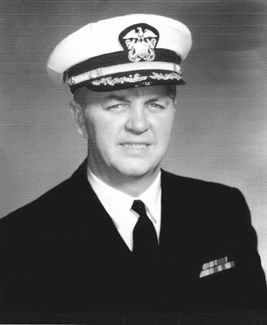
Jerry's professional career spanned a period of 62 years that included full time and part time employment from 1949 to 2011 when he finally retired. His professional career involved assignments on five continents - North and South America, Europe, Asia, and Australia and twenty different States. He was a registered professional engineer in ten States and also became a Certified Value Engineering Specialist. During his professional career he continued to maintain an active status in the Naval Reserve program and retired with the rank of Captain, Civil Engineer Corps, USNR. He also was a strong believer in higher education to keep abreast of new and developing technology and obtained a Doctor of Engineering degree from Rensselear Polytechnic Institute in Troy, New York. He received the U.S. Department of Transportation Silver Medal for meritorious service and was also recognized by his Alma Mater, Iowa State University for professional engineering achievements.
Because of his numerous moves throughout his professional career, Jerry's wife and family literally became world travelers living in many different states as well as two years in Cambodia. His family seemed to accept the moves in stride even though it often required them to attend different schools. His and Jan's five children did well in school completing college educations and becoming professionally employed with families of their own that include fifteen grand children. As one would expect, the children live in different States with their spouses and families. The eldest daughter, Laura Parris lives with her husband Ken in Slidell, LA, Cynthia and her husband Bill Hazel live in Oakton, VA, Gregory and Mary live in Arlington, VA, Linda and Doug Mesler reside in Andover, MA, while Geoffrey and his wife Amy live in Evergreen, CO.
Below: The Love Family 2006
Mildred (Jan) Love of Lake Mary, Florida died November 9, 2011, after a lengthy illness. Jan was born July 9, 1928, in Iowa City, Iowa, the only child of Joseph R. and Gladys M. Casey. After completing high school at La Porte City, Iowa, she entered the University of Iowa, receiving a Bachelor of Science Degree in Commerce in 1951. She met her husband, Gerald D. (Jerry) Love, when they were both in college. They were married at the Methodist Church in La Porte City, Iowa, April 4, 1952.
While living in the metropolitan Washington, D.C. area she was the chairperson for the National Conference of State Societies' involvement in the annual Cherry Blossom Festival. She was also an active volunteer supporting various activities of Wolf Trap National Park for the Performing Arts located in Fairfax County, Virginia. Her leisure activities included music, gardening, bridge, cooking, traveling, interior decorating, and maintaining a close relationship with her children and many grandchildren.
Always elegant and style conscious, Jan embraced new ideas and trends. In the spirit of re-invention she dispensed with her old-fashioned, given name, Mildred, adopting instead the mid-century modern moniker, "Jan."
Consider also all the publications she read: two local newspapers, the Christian Science Monitor, Foreign Affairs, The New Yorker, and U.S. News and World Report, to name a few. Jan was CNN before CNN was ever produced. She didn't passively allow history's proceedings to shape her life; rather, with a keen mind she analyzed current events unfolding during "her" century and reached for new opportunities to enrich her and the childrens' lives.
After a Depression-impacted childhood, as a post-war co-ed, she pioneered a business degree at the University of Iowa. Next, she married Jerry, a handsome cold war era naval officer, with whom she raised a family that seemed to be continuously on the move. After her marriage, she didn't just take Jerry's name, she lived it...fiercely, completely, and unselfishly. If you ask how she summoned the energy to feed, clothe, educate, and MOVE five children, countless pets and a successful husband, time and time again, including a two year stint in Cambodia, LOVE is your answer.




